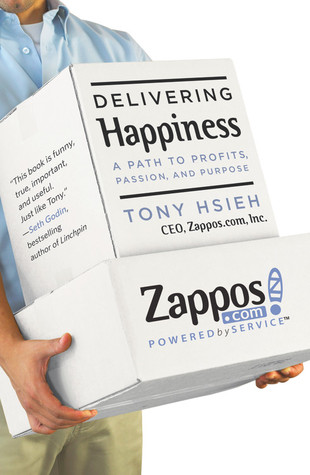Learn From the Best on How to Do Word of Mouth

Word of mouth is as old as humankind. Ever since we gained the ability to communicate we’ve been giving recommendations to others around us. Today, not only is there an overwhelm of information, it is becoming increasingly hard to distinguish which information we should or should not trust. Word of mouth allows people to cut through the bs, and find the services and products that best meet their needs from the sources they trust. If word of mouth has such a long history, it suggests there are many valuable lessons out there to learn from for those willing to take a look. Let us do that for you today.
Many businesses are just now coming around to the importance and power of word of mouth. If you do wrong by your customers and do not own up to it properly, the consequences can be quick and fierce. United Airlines learned this the hard way when video footage of a passenger being beaten and forcibly removed from a flight went viral. In retrospect the airline’s (not just United, other airlines also) practice of overbooking and forcing paying customers to change flights was an unacceptably horrible customer experience. In an attempt to understand their position, perhaps at the time the economics and lack of any such incident in the past made it seem like a reasonable policy. When facing such a PR disaster, research suggests owning up to the consequences and apologizing authentically and most importantly in a very timely manner is the way to go.
The Right Way to Do It
The positive form of word of mouth is infinitely more attractive than the negative. When you do right by your customers – when you create a product or service that they love and give them an amazing experience – word of mouth becomes strong and the return on investment is priceless. Our research led us to stories by Zappos, Airbnb, and CrossFit. Let’s dive in.
Zappos – Customer Service as a Culture
When it comes to amazing customer service, Zappos literally wrote the book (highly recommended book). Zappos – an online shoe store acquired by Amazon in 2009 for $1.2 billion – has their customer service deeply rooted within their corporate culture. This can be seen in their policy of having every single new employee regardless of position spend 6 weeks at their call center talking with customers. Upper management can thus gain first-hand experience of their customer’s needs rather than reverting to purely traditional data analysis. This also sends a powerful message that customer happiness is not empty rhetoric, but truly a critical part of their values.

Another key example of Zappos’ dedication to putting their customer’s needs first is in their return policy. Customers have 365 days to return their shoes for a 100% refund, and shipment both ways are free. They even encourage these returns. They suggest to customers unsure of their shoe size to order multiple sizes and return the ones that don’t fit. Their mentality is that they are not a product company, but rather a service company that happens to sell products. Subtle or not, this again reiterates that the products they sell are secondary to their focus on creating an amazing customer experience.
How does an amazing customer experience connect to word of mouth marketing? In addition to having a very impressive 75% return customer rate, they also have a NPS (net promoter score) of 57 which is considered to be exceptional. Such an NPS score shows their customer’s desire to share the great experiences they had at Zappos with their friends. On top of all this, Zappos has become the gold standard for customer service. Googling “best customer service company” displays blog after blog raving about them (now you can add us to that list). Talk about an amazing recruitment tool.
Airbnb – Gaining Trust while Disrupting the Hotel Industry
Airbnb is accredited with being one of the catalysts that led to the rise of the sharing economy we see as common today. The road here, though, was filled with very strong doubt. Inviting strangers to stay in your house was seen first off as insane, but more importantly as risky and dangerous. People could damage or steal your stuff, not to mention slit your throat while you were sleeping American Psycho style. How did they move from a place of such skepticism to becoming the successful and legendary startup they are today?
One key factor was how personal of an experience it was. Many people are searching for unique and profound experiences when traveling to new places. Airbnb’s hosts were able to provide these experiences much more personally than any hotel ever could. It was not unusual to become great friends with your host/guest. You could enjoy delicious local cooking together and be guided to great sight-seeing experiences outside common tourist traps. I’m sure many people were itching to tell their friends back home about their traveling experience as soon as they got the chance.

All this, and prices were a fraction of what you pay at many hotels. I remember the price difference alone being part of many conversation with my friends. The only hump everybody needed to get over was that trust gap. This trust gap was closed mainly in 3 ways. One was the insurance policies they put in place to assure hosts and guests that Airbnb is looking out for their best interests. The other 2 were forms of word of mouth. Airbnb developed a solid 5 star rating and customer review system to allow guests to quickly gauge the authenticity and quality of each home. The other form of word of mouth was their online referral system.
Airbnb was aware trust was a crucial lever in their business model. Considering that 92% of consumers trust recommendations from people they know, it wasn’t a big jump to look into using a friend referral system. They built a double-sided rewards system – a similar mechanism to the system we at Bazuru offer to offline businesses. In this case Airbnb offered a $25 reward to both the inviter and invitee when referring new users. Airbnb already had referrals for the reasons described above, however as a result of these incentives, this referral system increased bookings by over 25% in some markets.
CrossFit – Extreme Community Building
CrossFit is a fitness “trend” that started in 2000 in California and has exploded to become a world-wide phenomenon, with over 9,000 affiliate gyms worldwide in 2014 and no signs of slowing down. The explosive popularity to this new form of exercise can be attributed to many factors, the main ones being effectiveness, relatability, and finally community.

CrossFit’s workouts were based around functional movements – body-weight exercises, compound movements, and many others. Members frequently enjoy the benefits of doing common tasks, such as picking up heavy luggage, with more ease and energy. It’s so effective that military soldiers and firefighters have started including CrossFit workouts into their training. Scientific studies have shown high intensity interval training to burn 9 times more fat, and CrossFit has positioned itself to take advantage. Many people come back and refer others simply because it really works.
I myself find staying fit to be a constant struggle (I’m on a diet as we speak. I’m doing… so-so..). CrossFit’s culture and mantra is based very strongly on fitness, something we all deal with to varying degrees on a daily basis. It has become so synonymous with fitness, that winners of the now widely popular CrossFit Games boasts to be the “Fittest Woman/Man in the World”. Anybody can participate in regional competitions that precede the world championships, adding onto relatability when you have a buddy participating as a hobby.
Arguably the most important factor to their success is the sense of community they have built into their framework. All CrossFit classes are group classes. The regular struggle to improve yourself and get in shape is shared together with other members, building comradery and making the experience much more fun. Records of everyone’s performance is publicly displayed, also adding onto the friendly competitive nature and shared sense of accomplishment as members cheer each other on.
Fitness is a great industry for word of mouth via sharing on SNS and within social groups and communities. Having your customers accomplish their goals for fitness and having a great time doing it will motivate them to tell all their friends about it. CrossFit was able to hit all these levers and explode onto the fitness scene. As more and more people join the movement and swear by their results, CrossFit’s growth has no end in sight.
In Conclusion
Today we talked about just a few examples of how companies have been able to develop excellent word of mouth and utilize it to gain fantastic growth. Some learning points that stand out include focusing on amazing customer service, providing truly unique experiences, and building a strong sense of community. This is by no means an exhaustive list – there are countless more case studies and examples out there for us to learn from.
Do you have knowledge and lessons to share? We would love to hear and learn from you as well. If you have any stories or suggestions for us, email us at info@bazuru.jp and let’s have a conversation. In the meantime, sign up with Bazuru to incentivize and track your word of mouth, and let’s kick it into high gear together.


